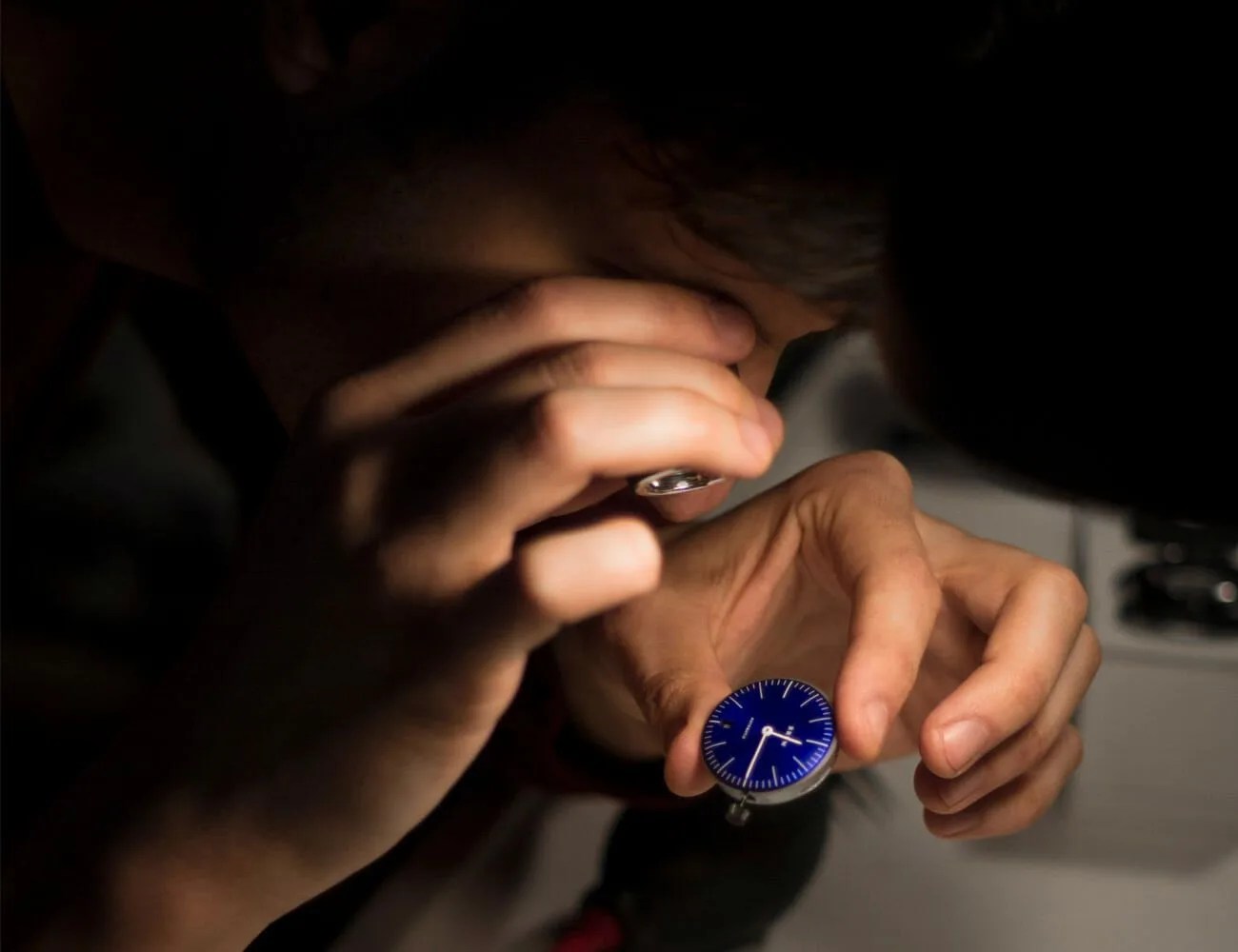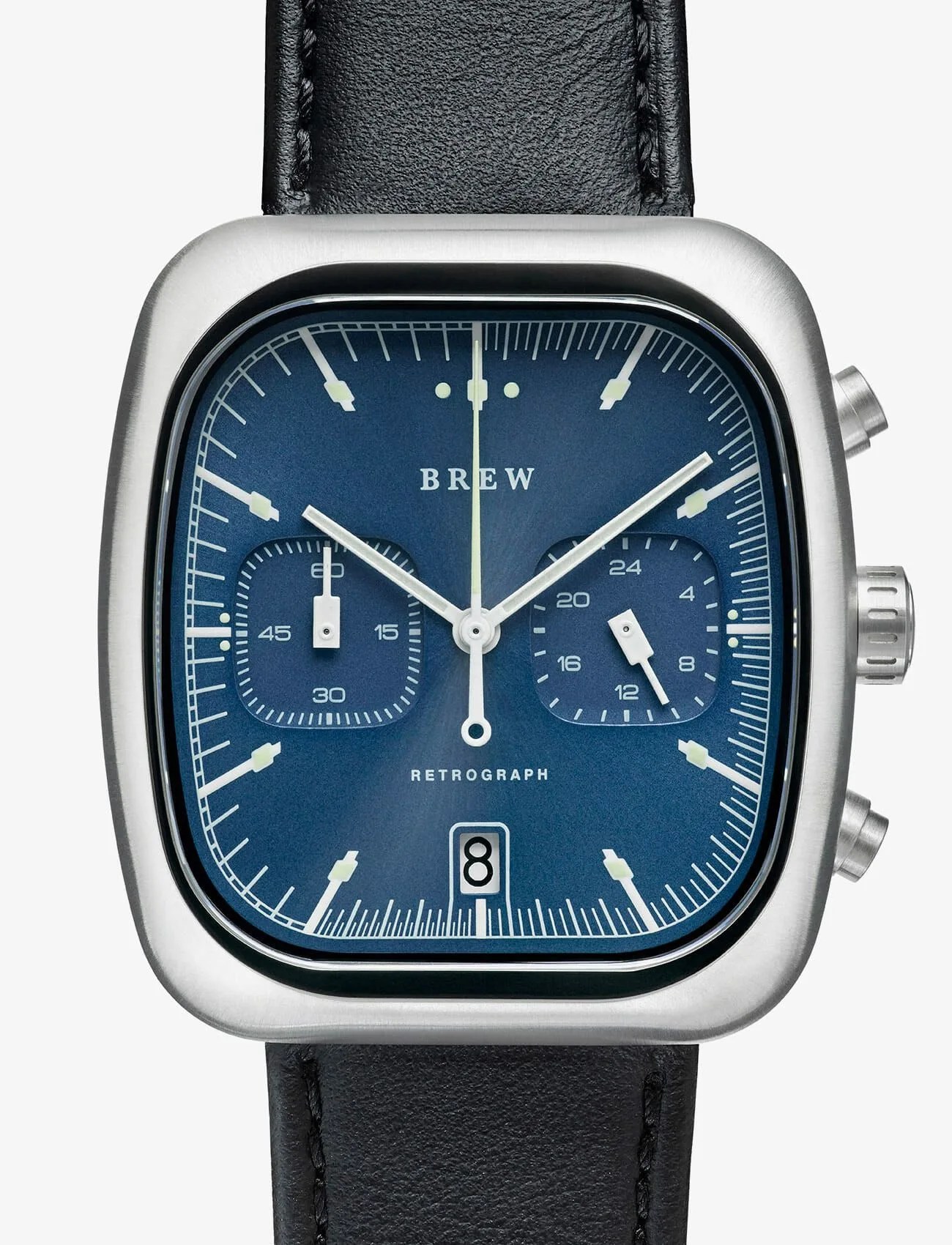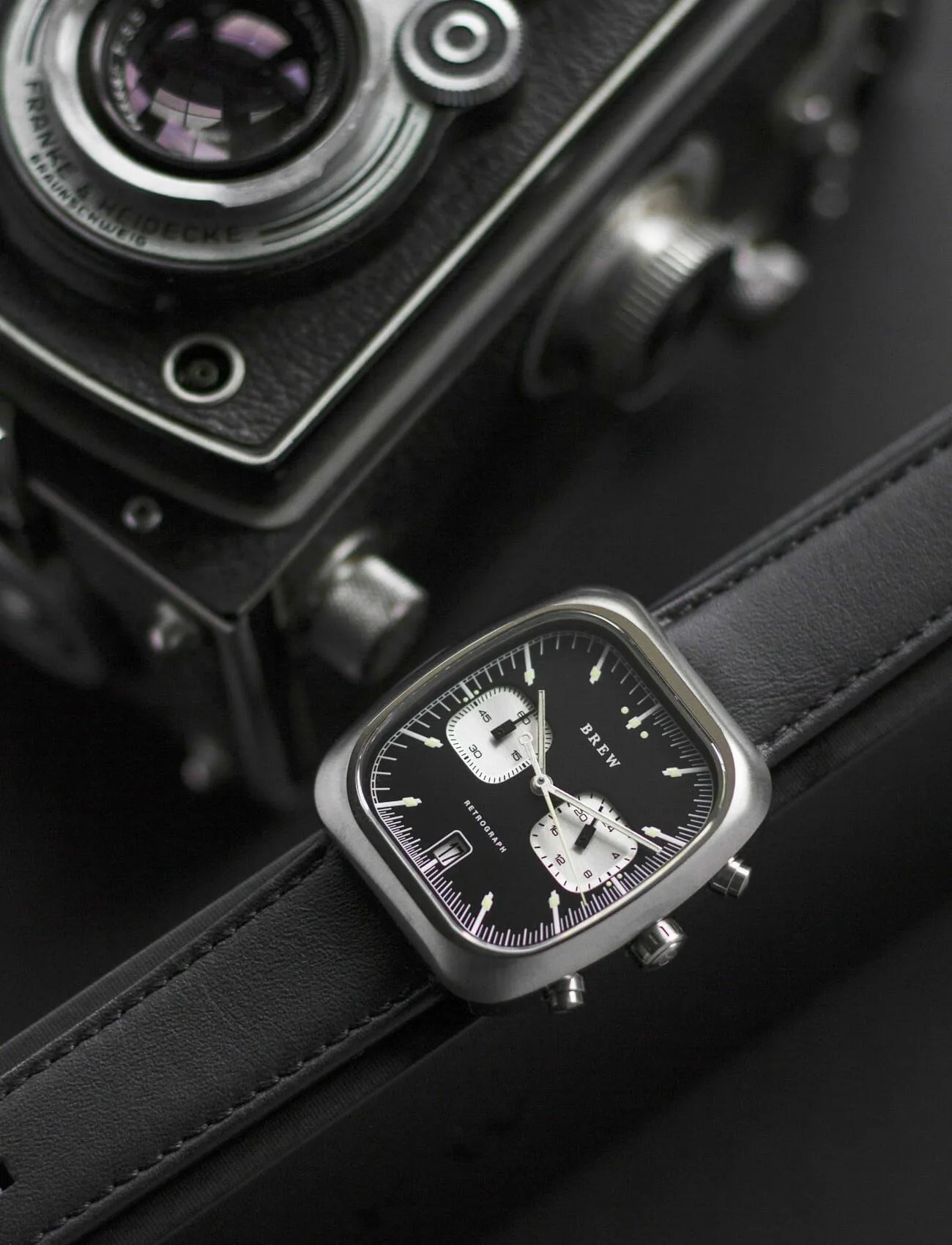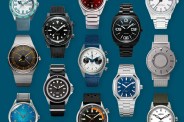Jonathan Ferrer’s father is a jewelry designer for Tiffany. His grandfather designed for Cartier. So, when it came to schooling, Ferrer’s parents were determined to send him off to learn a different trade, one that wasn’t so tough, didn’t involve working with his hands. He went off to engineering school, then majored in industrial design, then took an internship with Movado, the massive American watchmaker, designing jewelry that ticked.
Ferrer embarked on a half-decade journey, hustling to build the infrastructure he needed to start his own watch company. Designing a watch was “just as cool as designing a car,” he says. He met CEOs and factory owners around the world, working freelance, and sometimes getting paid in lunches and industry contacts. In 2015, he combined that networking with a Kickstarter campaign and started Brew watches. He designed one collection a year, selling 400-500 watches. In 2018, he released the Retrograph, a tank-cased, mecha-quartz-driven watch with a built-in espresso timer function that put him on the map as one of the hottest young American watch designers.

The 29-year-old still works alone, and this year released three limited-edition one-offs based on the original Retrograph. We asked him about his evolutionary designs, balancing his own desires with customer feedback, and why he chose a mecha-quartz movement.
Q: Walk me through your design process in creating the Retrograph.
A: There’s so much thinking that went into that specific design. I wanted to implant my coffee story into the watch. I also had to understand that every person that I sell my watch to isn’t going to necessarily want to hear this story. So it also had to be very open ended. It couldn’t scream “coffee making.”
The idea was that it had the coffee design, but was still an everyday watch. If they know it’s there, it’s more special — they can share and talk about it. You can point it out and have that aha moment — ‘Oh, I see the 35 seconds transition there, that’s pretty cool.’ There’s a balance between staying niche and unique, and staying open for the everyday person too.
Also, I had to think about what I wanted my signature style to be in the future. I wanted it to be that square case.



